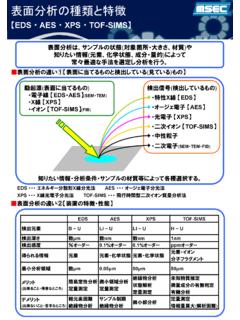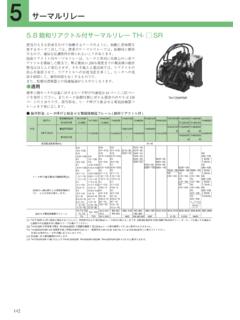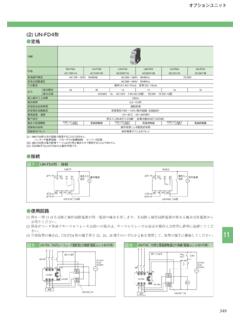Transcription of Quick Reference Guide Lettering V9 - Melco …
1 DSV9_QRG_Lettering 1 Rev: 4/16/09 Quick Reference Guide Lettering V9 DSV9_QRG_Lettering 2 Rev: 4/16/09 Icon Identification 1. Edit Mode to deselect elements, click on a blank area of your screen. 2. Pointer over element you can move an element. 3. The eight black boxes around an element are scaling boxes. The four corner boxes scale vertical and horizontal. The middle boxes scale just vertical or horizontal. 4. The open boxes around an element are rotating or skewing boxes. 5. Slant angle on screen click on the center hollowed out box and drag left or right.
2 6. Pointer over a digitized straight input point. Select an input point , click on it - it will become filled in 7. Pointer over a digitized curve input point. Select an input point , click on it - it will become filled in 8. Pointer over any wireframe line. Left click to add straight input points. Right click to add curve input points. DSV9_QRG_Lettering 3 Rev: 4/16/09 Lettering Create a Lettering element 1. Click on the Lettering tool on the input toolbar. 2. Left click on the screen workspace (View Window) where you want your Lettering text to appear (notice the cursor arrow has an A attached to it).
3 3. A flashing cursor is displayed on your screen. 4. Start typing your text. 5. Press the Enter Key (on the key board) when finished with text. OR 6. Click on the Lettering tool on the input toolbar. 7. Left click on the screen workspace (View Window) where you want your Lettering text to appear (notice the cursor arrow has an A attached to it). 8. Press the enter key on the keypad to go directly to the properties dialog box. 9. Type your Lettering in the text box then click on Apply or OK . Re-opening a Lettering element properties box 1.
4 With the selection tool, double-click on the text. 2. The Object Properties Box will appear. 3. Make the changes; click on the desired tabs if needed. 4. Click OK. Positioning the Lettering element 1. Select the text you want to move on the screen by placing your mouse on the center of that text. *NOTE: Your mouse pointer will display a 4-headed directional arrow symbol next to it 2. Left click and drag to move the element. DSV9_QRG_Lettering 4 Rev: 4/16/09 Scale and rotate Lettering elements 1. Click on the Lettering element.
5 Click and hold the shift key to scale proportionally (on any of the 4 corner handles). Click and hold alt key to scale from center out (on any of the 4 solid corner handles). Note: The user will get a wireframe preview when clicking and dragging points on an outline. This feature is particularly important for the user to visually see how big the Lettering will be. This feature works the same when moving designs on the screen. 2. Click on the element again to enter rotate mode. Notice that the handles become hollow. Click and hold on any of the 4 open corner handles.
6 3. Scaling, Rotating and Slanting individual letters Click on the X to select the individual letter. Move individual letters left or right. To move the letter up or down, hold the control key on the keypad. Scaling individual letters Use the shift key and click on one of the corner handles to scale proportionally (the object remains a Lettering element). Rotating/Slanting individual letters allows the user rotate individual letters. Click and drag on the one of the four corner handles DSV9_QRG_Lettering 5 Rev: 4/16/09 Wireframe Editing Mode 1.
7 Edit the wireframe points as well as entry and exit points Select the letter (Click on the x in the center of the letter) On the View toolbar, click on the tool Wireframe Editing Mode You will now be able to move each wireframe point as well as the start and exit points. The start point is represented by a green circle and the exit it represented by a red X Add color changes between letters 1. Select the letter (click on the x ) that you want to change the color. Then, click on the color box on left side of screen.
8 Your letter will now be the color you just clicked on. DSV9_QRG_Lettering 6 Rev: 4/16/09 Auto Borders All of the following can be added or changed: Stitch Types: Satin or Walk/Bean Stitch, Appliqu and Tackle Density/Column Width adjustments or Stitch lengths Color Changes/Border sequence You also have the option of stitching all the inside of the letters first then the border by selecting Stitch Borders Last DSV9_QRG_Lettering 7 Rev: 4/16/09 Using the Dynamic Toolbar to make Quick changes to your Lettering elements This toolbar is only displayed when an element or input tool is selected Change the Stitch Type 1.
9 Click on the Text 2. Click on Stitch drop down arrow on the dynamic toolbar (see above) 3. Click on the stitch of choice (satin, fill, E-stitch, zigzag, and edge fill) Change the Alphabet 1. Select the Lettering on the screen 2. On the dynamic toolbar, click on the drop down arrow next to Alphabet 3. Roll the mouse down to select the desired alphabet DSV9_QRG_Lettering 8 Rev: 4/16/09 Add Underlay 1. Click on text on the screen 2. Click on underlay drop down arrow on tool bar 3.
10 Click on Underlay you want to use 4. You can also double click on your text and set up Auto Underlay in the Object Properties box DSV9_QRG_Lettering 9 Rev: 4/16/09 5. This option allows you to set parameters to automatically place different underlay s for different size ranges of elements (see below). Click on the check box next to Enable Auto-Underlay then click on the input box - the following dialog box is displayed. You can change the parameters or leave the defaults. DSV9_QRG_Lettering 10 Rev: 4/16/09 Lettering - Object Properties Dialog box Adjust the short stitches 1.






